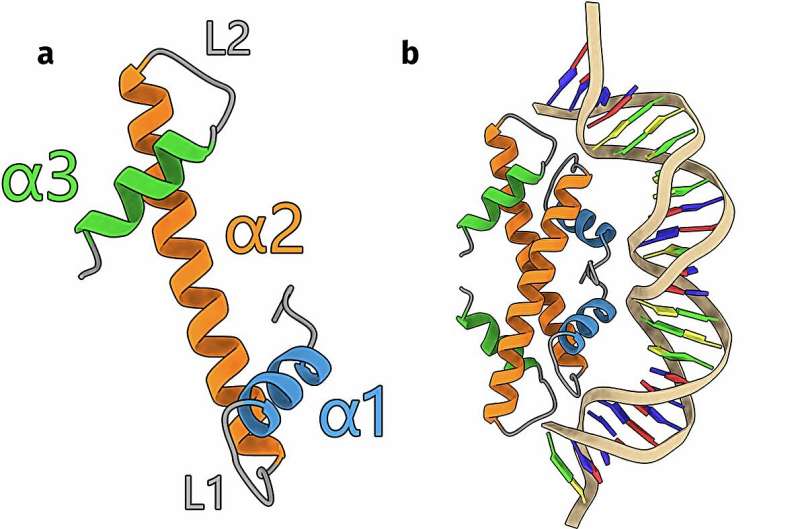It has only recently been discovered that single-celled organisms (bacteria and archaea) also have histones—proteins that structure DNA. Now, Leiden Ph.D. candidate Samuel Schwab has found that the histones in these organisms are much more diverse than previously thought.
Schwab and his colleagues describe no fewer than 17 different groups, each with unique structures and functions. The discovery has been published in Nature Communications.
“DNA is such a large molecule that it technically doesn’t fit inside a cell,” explains Samuel Schwab. He is a Ph.D. candidate in the Dame group at the Leiden Institute of Chemistry. “That’s why there are proteins that compact the DNA. The most well-known are histones.”
For a long time, it was believed that only complex life forms had histones, until scientists discovered them in archaea and eventually in bacteria (both are single-celled organisms without a nucleus). Histones form small spheres, called nucleosomes, around which the DNA wraps.
Unraveling histones with the help of computing power
The DNA of archaea and bacteria appears to hold numerous “recipes” that closely resemble those for known histones but with slight differences. “We were very eager to find out what kind of histones these recipes would produce,” says Schwab.
“This is quite difficult to do in the lab, but fortunately, three years ago, a smart AI algorithm was introduced: AlphaFold. This program is very good at predicting protein structures based on the corresponding sequences (recipes) in DNA.”
From an enormous protein database, Schwab collected no fewer than 6,000 DNA sequences that could serve as recipes for yet undiscovered histones in archaea and bacteria. “With the help of AlphaFold and the Leiden supercomputer facility ALICE, we predicted the structure of the corresponding histones for all these sequences.”
The histones in archaea and bacteria turned out to be much more diverse than previously thought. Schwab identified a total of seventeen different groups. Some of these were already known, but there were also entirely new structures.
The researchers then tested whether the computer was correct. “We determined the structure of one of these new groups of histones in the lab,” says Schwab. “It turned out to be almost exactly as the computer had predicted.”
Not just wrapping, but also folding or bridging
Based on the predicted structures, the researchers were able to form hypotheses about how these proteins behave and what they might do with the DNA. Schwab says, “We saw that there are not only spheres that wrap the DNA, but also other structures that, for example, can fold the DNA or bridge different sections of DNA strands, creating loops.”
“Also fascinating,” adds supervisor Remus Dame, “was the discovery that some histones don’t seem to bind to DNA, but to membranes. So, they have a function other than DNA organization. But we still need to investigate that further.”
The research by the Dame group contributes to a better understanding of the evolution of DNA organization and how different organisms manage their genetic material. Dame says, “Additionally, this knowledge helps us interpret DNA data and measurements. We still know very little about what actually happens inside the cell.”
Schwab says, “There’s still much to learn about the role of these histones. Discovering these new variants is just the beginning.”
More information:
Samuel Schwab et al, Histones and histone variant families in prokaryotes, Nature Communications (2024). DOI: 10.1038/s41467-024-52337-y
Provided by
Leiden University
Citation:
Chemists discover new ways in which single-celled organisms organize their DNA (2024, September 23)
retrieved 24 September 2024
from https://phys.org/news/2024-09-chemists-ways-celled-dna.html
This document is subject to copyright. Apart from any fair dealing for the purpose of private study or research, no
part may be reproduced without the written permission. The content is provided for information purposes only.

